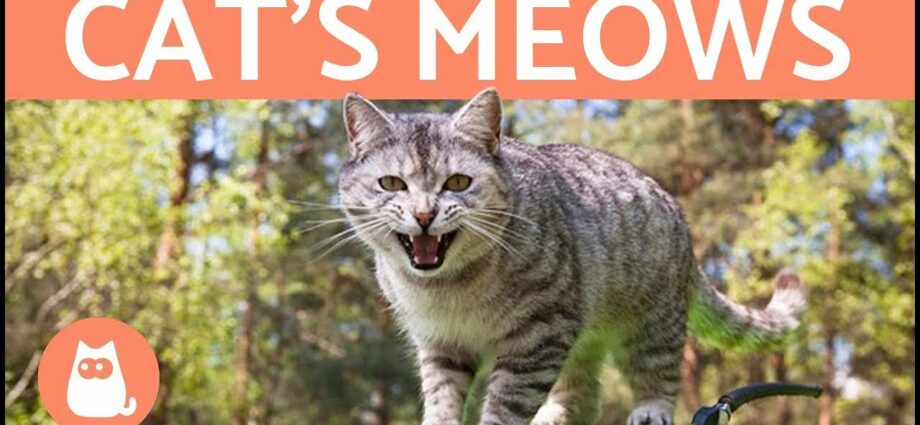Contents
Cat meowing: meanings of cat meowing
The cat is an animal that has been domesticated by humans for tens of thousands of years. During these many years of life together, cats have developed a real language for communicating with humans. But are you sure you understand your cat’s meows?
The meows, where does it come from?
Meows are the basis of communication between cats and humans, or between cats. They are produced by an air passage through the cat’s larynx. The cat can modulate the shape of its larynx to vary the frequency and intensity of the meow, depending on what it is trying to tell us.
From an early age, kittens know how to meow, to get their mother’s attention and ask for food, or attention. This meow, initially very high-pitched, tends to become more severe as the cat grows.
The cat has a very varied range of meows in order to convey different messages to the cat, or to the human, to whom it is addressed. An adult cat thus uses more than ten vocalizations.
Most of the time, these meows testify to the cat’s satisfaction, especially when he welcomes his master, or when he asks for something (food, water, etc.). But sometimes these meows can have other meanings. In particular, they may reflect a cat’s boredom or something that frustrates or bothers it. They can also be part of a larger sexual behavior or be a sign of the animal’s frustration. Finally, do not forget that meows can also be a way for the cat to alert on pain or anxiety.
Breeding meows
If you or your neighbors have a cat that is not sterilized, then you must have heard those very peculiar meows that a cat makes when she’s in heat. These vocalizations strongly resemble the cries of a baby. They take place mainly at night, when cats are most active.
These meows alternate between two frequencies, like crying. They aim to warn other cats that a female is in heat, in order to gather males who would like to reproduce. Usually these are very loud meows.
In addition to these meows emitted by the female, one often hears other more serious meows, and interspersed with howls, that is to say of cats which “spit”. It is the males who fight for the female who emit them. They aim to impress their rival and force him to flee.
If you are bothered by these meows, think about quickly sterilizing whole cats that live in the area, in order to limit or even eliminate the cause of the conflicts. This sterilization also improves animal welfare and reduces the risk of transmission of certain diseases.
Behavioral meows
In addition to the daily meow and breeding meows, behavioral meows can sometimes be heard, often related to a stressed state of the animal. We recognize them because they are slow meows produced with the animal’s mouth closed. They are usually high pitched, short and repeated.
Most often, they take place when the animal is anxious and seeks to summon a human or scare away from the danger it has identified. Almost the same meows are emitted when the animal is in pain somewhere. In these cases, it will be necessary to check the functioning of the various organs in order to identify health problems as quickly as possible. In particular, it will be necessary to verify that the animal is not constipated or that it does not have cystitis. It is these meows that take place during the awakening phases of the cat after anesthesia.
Finally, as they get older, some cats start to meow more and more frequently, staring into space, as if they were lost. These meows are linked to a loss of landmarks, and are the sign of accelerated cerebral aging. They can be assimilated in a way to the senility that some elderly people may have.
When to see my vet?
Cats have a wide variety of meows, and each cat expresses itself in a different way. Ultimately, it is the owner of the animal who will know him best, and who will learn to understand his cat. Over time, communication between humans and animals is put in place and the owner will be able to identify and decipher the different meows.
Any unusual meows, or any changes in the animal’s voice should alert us. This will be all the more urgent if this change is accompanied by a loss of appetite or uncleanliness. Indeed, meowing will often be a sign of pain in these cases that your vet will need to look for.










